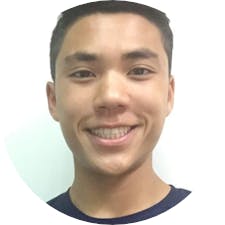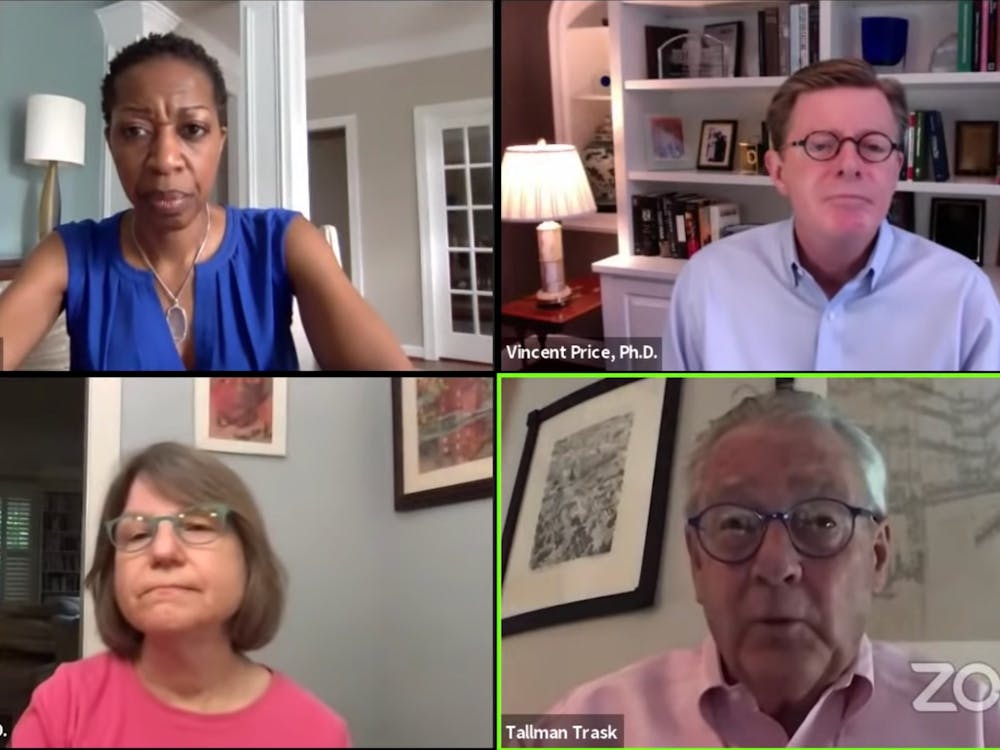A panel of Duke leaders discussed COVID-19 and campus life Friday morning in one of the first live discussions regarding the pandemic since the University shifted online in March.
The panel discussion, livestreamed on YouTube, was one of two discussions about COVID-19 that administrators held Friday aimed at faculty and staff. It included President Vincent Price, Provost Sally Kornbluth and Executive Vice President Tallman Trask and was hosted by Valerie Ashby, dean of Trinity College of Arts and Sciences. The group addressed several key questions, from the Duke Compact to the state of University finances and the future of Duke’s athletics.
Why did Duke bring students back to campus?
“We’re a learning community. We have thousands of bright and talented young people,” Price said. “They’ve been isolated, desperately in need of the opportunity to engage deeply and intellectually with each other and to form those bonds with faculty to conduct research.”
Crucial to the mission of the University—to train tomorrow’s intellectual leaders—is community, Price said, even if that community is masked and six feet apart. Given that COVID-19 could be around for a “very long time,” the University will do its best to sustain those bonds of community while also fulfilling health and safety protocols.
Kornbluth added another reason for why the University has brought students back: consideration for students without stable home situations.
“One of the things that we have to think about as well as our whole student population is particularly vulnerable students,” Kornbluth said. “There are students for whom the learning environment on campus really is better than their learning environment elsewhere. And we really want to make sure we can accommodate a full student body and have the optimal educational experience.”
So far, Kornbluth said, the return of students has occurred without serious repercussions. Duke announced Aug. 12 that only four of the 3,116 tests that Duke had administered to returning students thus far in August had come back positive.
“We were worried that our initial challenge would be a huge bolus of kids who were positive that we then had to quickly get under control,” she said. “We’re starting at a good level. Now what we have to do is really maintain this.”
Other schools have taken different routes—or seen more cases of the virus after moving ahead with a return to campus. Princeton University recently shifted to fully remote instruction for the fall semester. Only a week after classes began at the University of North Carolina at Chapel Hill, COVID-19 outbreaks have occurred in residence halls and at a fraternity house.
Why the Duke Compact?
The purpose of the Compact, Price said, was to clearly spell out the individual commitments that will have to be made in order for the University’s reopening—a delicate and ongoing experiment—to succeed. He said the Compact grew out of input from faculty, staff, administrators and students.
“Each of us can act individually in ways that either contribute to other people’s health and safety or which, frankly, can endanger others,” Price said. “[The Duke Compact] is a collective statement about the basic things each of us has to do to serve and support each other.”
In terms of consequences for violating the Compact, Kornbluth said that Student Affairs and the Office of Student Conduct will follow up with more “egregious” violations.
“This pandemic is a challenge to our community, and our community has to be the answer to that challenge,” Price said.
How is the University going to maintain safety throughout the semester?
Price outlined three forms of COVID-19 testing that the University will administer: symptomatic testing, baseline testing and surveillance testing.
Baseline testing—evidenced by the yellow wristbands given to students after being tested— was administered for all students arriving in Durham. Symptomatic testing will occur when a student starts feeling symptoms of the coronavirus and reports those symptoms via Duke’s symptom-monitoring app. Surveillance testing will involve pool testing of several thousand students, faculty and staff each week.
The goal of surveillance testing, Price said, is to “identify potential hotspots” of the coronavirus.
Besides testing, Kornbluth said the University will constantly review data: community positives, the rate of infection and activity in hospitals.
“There’s no sort of single bright line like I can say we have X number of cases, we’re shutting down,” she said. “Honestly, if we can keep this under control, we’re going to be reluctant to start sending people back into their communities. We don’t want them to get sick here and then send them home.”
What’s the state of University finances?
The University currently faces a potential revenue loss of upwards of $250 million, Trask said.
The financial difficulties due to the pandemic are entirely different from the financial crisis that occurred in 2008 and 2009, when a collapse in U.S. markets caused a 25% hit to Duke’s endowment, Trask said. Unlike in that crisis, philanthropy to Duke has remained steady, he said, and the markets have rebounded after an initial downturn.
What is unique to the pandemic is a loss of revenue, Trask said: tuition, room and board, and fees. “The number continues to deteriorate,” he said.
So far, the University has adjusted by instituting hiring freezes and suspending contributions to 403(b) employee retirement funds. Trask emphasized that he does not expect Duke to engage in widespread furloughing, as some peer institutions have done. Instead, any decisions about furloughs will occur on a unit-by-unit basis, he said.
“We’ve been trying to think about people as employees, not just as numbers,” he said.
What’s up with Duke athletics?
Price emphasized that the priority for the athletics department is the health and safety of Duke’s student-athletes. No student-athlete will be forced to compete, and those who choose not to will retain their scholarships and financial aid, Price said.
Twenty-six members of the football team have tested positive, with most testing positive on arrival in Durham in July, Price said. All of those who tested positive—all of whom were asymptomatic—went through an isolation period and have now returned to the team, according to Price.
“We will only go forward if we can ensure that it can be done safely,” he said. “This remains very much an area that requires thoughtful decision making. It’s really grounded in our lived experience as we move forward.”
Get The Chronicle straight to your inbox
Signup for our weekly newsletter. Cancel at any time.

Chris Kuo is a Trinity senior and a staff reporter for The Chronicle's 118th volume. He was previously enterprise editor for Volume 117.

